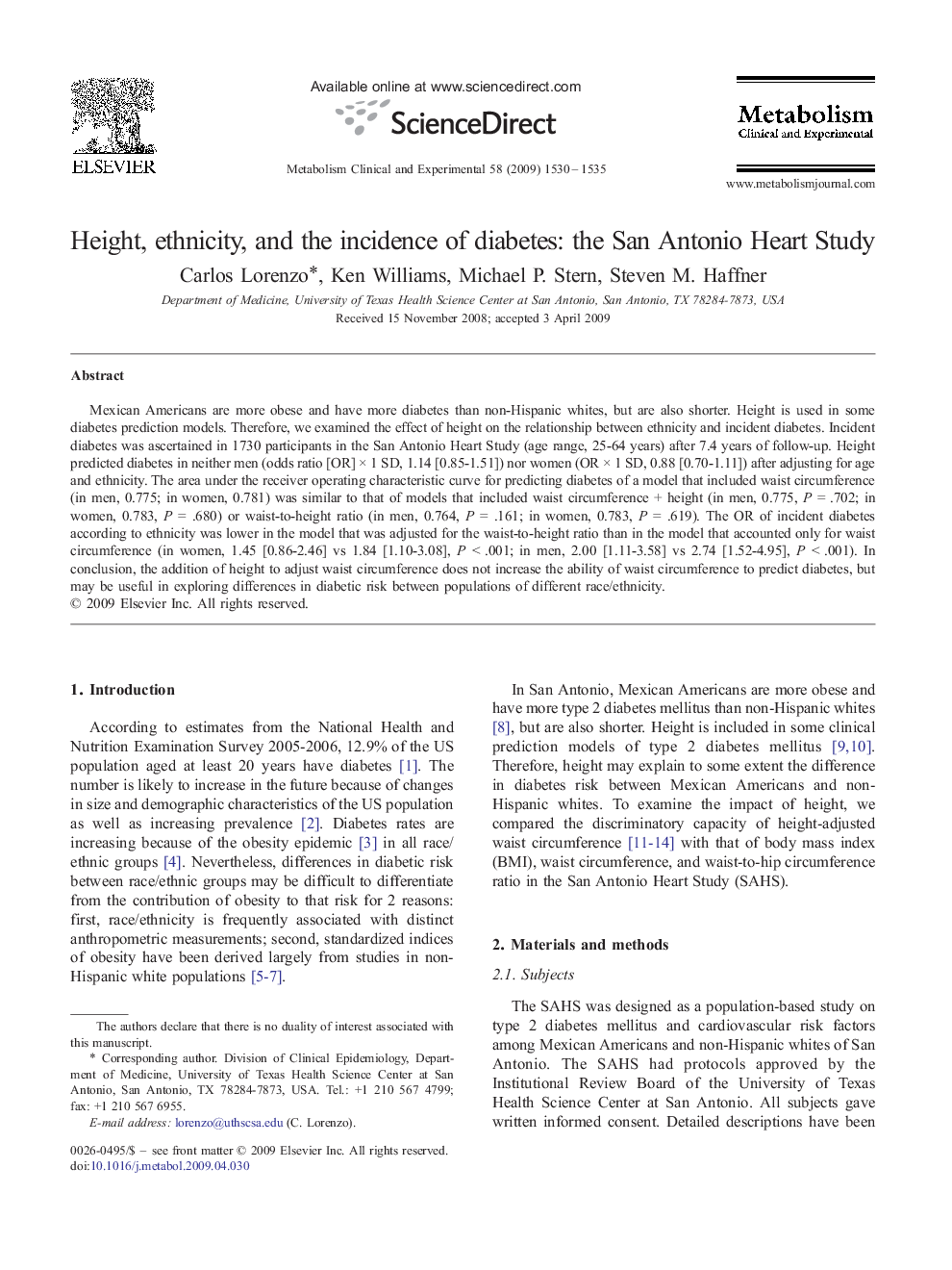| کد مقاله | کد نشریه | سال انتشار | مقاله انگلیسی | نسخه تمام متن |
|---|---|---|---|---|
| 2806995 | 1157142 | 2009 | 6 صفحه PDF | دانلود رایگان |

Mexican Americans are more obese and have more diabetes than non-Hispanic whites, but are also shorter. Height is used in some diabetes prediction models. Therefore, we examined the effect of height on the relationship between ethnicity and incident diabetes. Incident diabetes was ascertained in 1730 participants in the San Antonio Heart Study (age range, 25-64 years) after 7.4 years of follow-up. Height predicted diabetes in neither men (odds ratio [OR] × 1 SD, 1.14 [0.85-1.51]) nor women (OR × 1 SD, 0.88 [0.70-1.11]) after adjusting for age and ethnicity. The area under the receiver operating characteristic curve for predicting diabetes of a model that included waist circumference (in men, 0.775; in women, 0.781) was similar to that of models that included waist circumference + height (in men, 0.775, P = .702; in women, 0.783, P = .680) or waist-to-height ratio (in men, 0.764, P = .161; in women, 0.783, P = .619). The OR of incident diabetes according to ethnicity was lower in the model that was adjusted for the waist-to-height ratio than in the model that accounted only for waist circumference (in women, 1.45 [0.86-2.46] vs 1.84 [1.10-3.08], P < .001; in men, 2.00 [1.11-3.58] vs 2.74 [1.52-4.95], P < .001). In conclusion, the addition of height to adjust waist circumference does not increase the ability of waist circumference to predict diabetes, but may be useful in exploring differences in diabetic risk between populations of different race/ethnicity.
Journal: Metabolism - Volume 58, Issue 11, November 2009, Pages 1530–1535